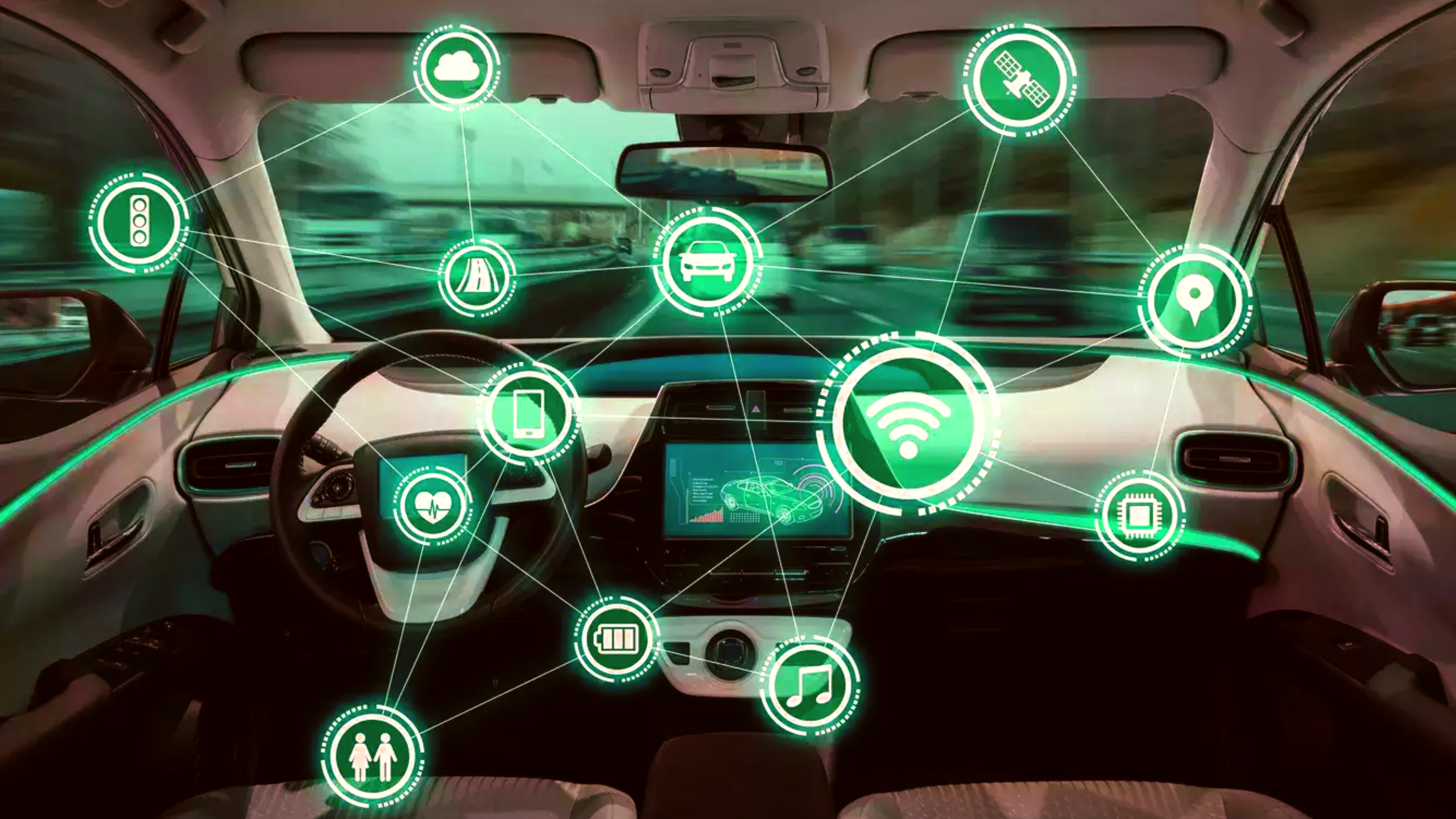
The market for automotive software and electronics is expected to grow strongly in the next decade. What are the expected trends? How is it going to be the future of mobility?
There are major drivers of this evolution of automotive electronics, among which electronics systems for autonomous driving, electric vehicles, and the strong consumer demand for infotainment services are the protagonists.
As an Electronics Manufacturing Services (EMS) company, we operate in a variety of industries, among which automotive is one of our pillars. Our interdiscinplinary expertise and know-how in the field let us approach very closely innovation in the future of vehicles.
Read the whole article to discover the main electronic applications of today's vehicles and the expected trends of the automotive industry.
The role of electronics in the automotive industry
Electronics is at the heart of the automotive industry and this tendency is always on the rise, especially with the diffusion of electric vehicles. Besides, the great evolution of microelectronics, especially of high-power electronics, has led to a marked growth in infotainment, lighting and sensor applications that require a robust and reliable design. Also, the industry is actively contributing to increase road safety by developing technologies able to limit accidents, for instance through stability control systems and driver health status.
Generally, the evolution of smart (intelligent) technologies has seen an interest towards GPS and the entire IoT ecosystem for supporting vehicles in the reception and transmission of high-speed data. Three main factors make the car attractive for technology: autonomous driving, electric vehicles, and the strong consumer demand for infotainment services. Autonomous cars without the driver represent the challenge and the goal of the near future. The opportunity of limiting road accidents and avoiding dangerous situations, is a strong reason to bring this challenge to success through programmed electronic systems.
Let’s see how electronics has taken over from mechanics more in detail:
.jpg?width=153&name=Foto%20HG%20instagram%20(1).jpg)
MEMS TECHNOLOGY
Micro-electromechanical systems (MEMS) technology uses microfabrication techniques to combine the capabilities of microelectronics with the mechanical properties of microsensors. The advantages of these approaches include high efficiency, small size, and low cost. MEMS-based electronic safety systems can ensure compliance with functional safety standards and enable designers to achieve their goals more efficiently. The growing demand for safety and security in the automotive sector is the main driver for the growth of this market. Main technologies based on MEMS are gyroscopes and accelerometers, used for applications such as crash detection, airbag activation, active suspension, stability control systems and GPS navigation systems.

ELECTROMAGNETIC COMPATIBILITY (EMC)
Wireless communication requires high-performance electronic systems operating at high data rates, which must meet some electromagnetic compatibility requirements. For instance, manufacturers of the automotive industry should develop electronic devices able to mantain signal integrity, which do not emit electromagnetic interference (EMI) or excessive noise, as well as they should be immune to noise emitted by other electromagnetic sources. In this field, miniaturization is also a key feature and part of nowadays' standards.

NOISE IN A VEHICLE
One of the most important phase of vehicles is the combustion in the cylinders of endothermic engines. In this regard, noise in the cabin is something that automotive engineers have always tried to reduce. The method used is the Active Acoustic Control or Active Noise Control (ANC), which allows to reduce the noise by the addition of a second sound specifically designed to cancel the first. Such system is called noise-canceling, whose signals are reproduced by speakers in the car’s cabin, making unwanted noise less perceptible.

LED LIGHTING
In the automotive industry, light-emitting diodes (LEDs) are broadly used for high beams, brake and position lights, side and rear turn signals. The brightness level of the LEDs varies based on their function and for this reason dimming circuits are used to differentiate the brightness level through a pulse width modulation (PWM) driving technique, that modulates the width of the pulses applied to the LEDs. Managing the power supplied by the integrated circuit drivers in various configurations is fundamental for a smart lighting control system, and a constant current is needed in order to generate a uniform brightness.

GESTURE RECOGNITION
Gesture recognition or gesture detection is the ability of identifying a series of movements of the human body. Devices supporting such electronic technology have a camera able to identify and scan the scene in a 2D or 3D scenario, or through solutions based on the Time-of-Flight (ToF) technique, consisting in an infrared ray sent on the target object, with a reflection of the signal processed by the receiving electronics. In these cases the electronic devices form a kind of map by analyzing the movement and consequently applying certain control functions. Another solution for gesture recognition is through the use of ultrasonic signals, as the case of parking sensors.

LIDAR
LiDAR (Light Detection and Ranging) systems measure the distance of a target object by sending high frequency light pulses with wavelengths from about 830 nm to 940 nm. basically, the light bounces off a sensor, which interprets the signal and calculates the distance traveled by the light by measuring its diffusion. LiDAR systems are very similar to radar technology because they both use parameters such as speed, angle, and range, but radars use radio waves instead of light. In the automotive industry LiDAR allows vehicles to automaticly detect obstacles or other vehicles.

ELECTRIC VEHICLES
In the automotive industry electric vehicles are at the heart of the future of mobility. Using electricity to run the engine, they require DC/DC converters for current exchange with different voltage, DC/AC traction inverter for driving electric motors and providing power to the wheels, and finally also AC/DC converters for charging vehicle batteries both during braking energy recovery called “regenerative braking”, and from residential or high-power (for fast charging) charging stations. There are three main types of electric vehicles: battery electric vehicles (BEVs), fully electric with rechargeable batteries without a gasoline engine; plug-in hybrid electric vehicles (PHEVs), which can travel long distance before the gasoline engine fires (10-70 km) and can recharge the battery through both regenerative braking and external power supply source; and the more 'standard' hybrid electric vehicles (HEVs), which can travel a shorter distance (about 2-3 km) before the gasoline engine fires.
Toward the future of automotive electronics
The electronics are continuously increasing in the automotive industry and this is driven by multiple factors which will determine its future developments and evolution. Government safety norms, the increasing consumer demand for safer vehicles, and the adoption of remote systems are the main drivers of automotive electronics.
According to a field study conducted by McKinsey & Company, Inc. in 2019, the automotive electronic and software market will see a worldwide strong growth through 2030. Have a look on the estimations of the expected sales and of the expected market growth by electronic segment:
Advanced features of electronic systems are more and more demanded to satisfy the sophisticated functions of new generation vehicles. In particular, major applications include safety, ADAS (Advanced Driver-Assistance System), infotainment, body electronics and powertrain. Experts in the field estimate that applications for safety, ADAS and infotainment will account for the 60% of the demand.
In the next future, ahead of the trend we can find autonomous driving, connected vehicles, the electrification of the powertrain, and shared mobility (also called the ACES trends), which will drive a profound change in the automotive industry because all these trends will allow personalized user behaviours, shifting value pools, mobility preferences, as well as they will enhance innovative business models. Technology progress is always on the rise and this impacts the automotive industry as well, offering more and more sophisticated solutions.
Hemargroup expertise in the automotive industry
As Hemargroup, we worked at different projects in the automotive industry for the development of electronic devices. Our large expertise and know-how in the automotive industry ranges from the design and manufacturing of high voltage electronic systems, in thermal management and in the assembly from small PCBs to more complex and sophisticated modules. Our test center and analysis also ensures that every aspect is considered in order to identify potential shortcomings at every level and to guarantee the industrial optimization of the final product. Our interdisciplinary engineering team with complementary competencies and our large production site make us a strategic EMS partner in the field of electronics, at 360°.
Our reliable partner network allows us to prevent supply chain disruptions to happen and avoid related risks, especially during critical times like in the present era of component shortages. Our certifications ISO 9001, ISO 14001, ISO 13485 and AQAP 2110 testify our quality processes and internal operations within the company.
For almost 50 years, we have been a Swiss Excellence partner for the growth of our customers through product life-cycle management strategies and reliable electronic manufacturing services. Constantly updated on the latest technology trends, we can lead to the latest product launch to reverse engineering and obsolescence management, thanks to our electronic manufacturing solutions. The automotive industry is constantly evolving toward electronic integrated systems and using cutting-edge technologies is a key factor to ensure innovation.
Swiss-Made quality is well known in the international market. In line with it, we respect deadlines and specifications, to ensure the maximum satisfaction for our customers. We are industry 5.0 ready, characterized by an extensive digital tracking system with a smart BI infrastructure, which can monitor every single component and process, ensuring complete traceability, from the warehouse to the final product. Each PCBA with its own QR Code is compliant with IPC international norms, ensuring maximum quality.
Do you need advices in the automotive electronics industry? Do not hesitate to contact us:
.png)
